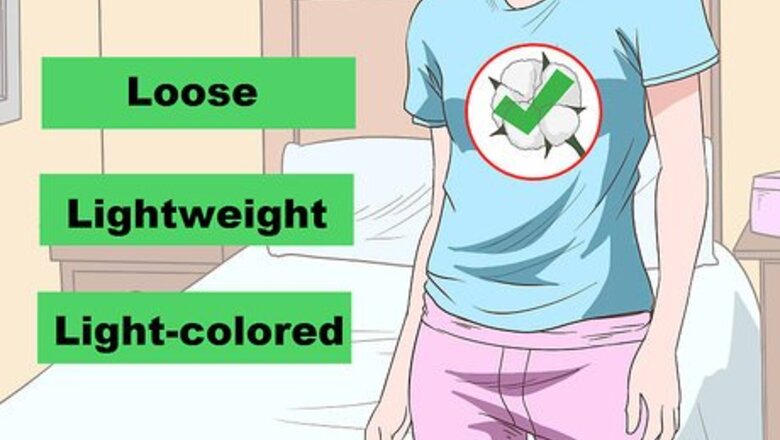
views
Trying Quick Fixes
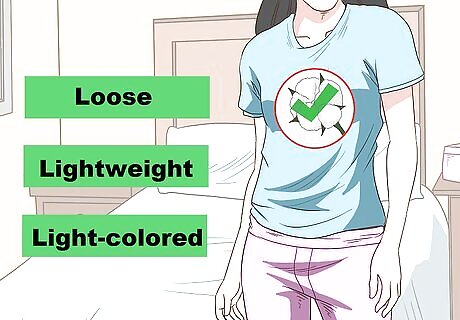
Wear loose, lightweight, and light-colored clothing to stay cool. If possible, take off extra layers of clothing. Lightweight fabrics like silk, chiffon, thin cotton, and linen are the best choices for extreme heat. In addition, try to wear white and other light colors, which can help beat the heat by reflecting sunlight.
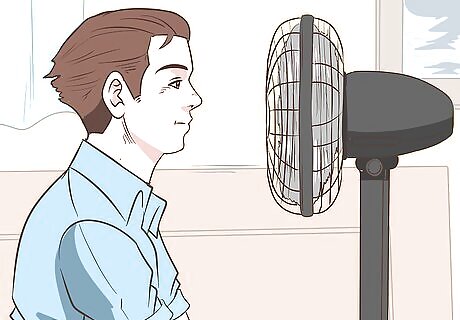
Sit in front of a fan or air conditioner. If possible, find an air-conditioned spot. If you don't have access to air conditioning at home, try spending time at the grocery store, movie theater, or at a friend's house. At the very least, sitting in front of a fan can help keep you cool. If you only have access to a fan, try dampening your skin with cool water as you sit by the fan. The water on your skin will feel nice and cool you down as it evaporates.
Fan yourself with long, gentle motions. If you can't get to an air conditioner or an electric fan, fanning yourself by hand can help lower your temperature. The key is to use a fan (or an improvised object) with a broad surface area and to avoid fanning yourself too vigorously. If your fanning motions are too fast, they'll get your blood pumping and make you hotter. Gentle motions can help the sweat on your skin evaporate, which helps lower your temperature. Dampening your skin with cool water while fanning yourself is also helpful.
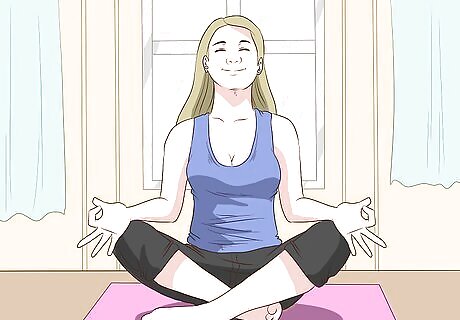
Try relaxation techniques to help lower your core temperature. Try sitting comfortably and taking slow, deep breaths. As you inhale, count to 4, then hold your breath as you count to 7, and exhale for an 8 count. Do your controlled breathing exercises for at least 10 to 15 minutes to reduce your heart rate and lower your core temperature. If it helps, put on some relaxing music or recordings of soothing nature sounds, like crashing waves or humpback whale songs. You could also give meditation a try. You can find guided meditations for relaxation on YouTube and other services. Relaxation techniques can help you cool off if you’re experiencing hot flashes.

Soak your feet in cold water to cool your body down. Fill a small basin with cold water and ice, then place your feet inside. Soak them for 15 minutes at a time to prevent ice burns. Add ice or refill the basin with cold water when it starts to get warm.
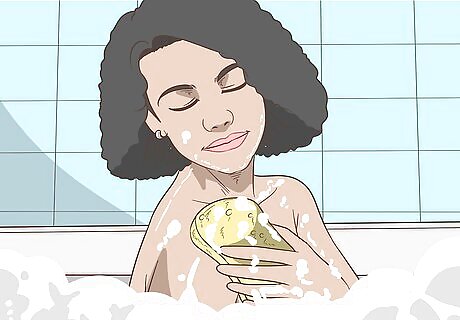
Take a tepid bath or sponge bath to lower your body temperature. If you want to reduce a fever, a lukewarm bath is better than a cold bath. Submerging yourself in cold water can cause shivering, which can increase your body temperature. If you don’t have access to a tub, try using a damp sponge, washcloth, or sheet. Having a fan blowing on you while you bathe or sponge yourself can also be effective.
Staying Cool with Food and Beverages
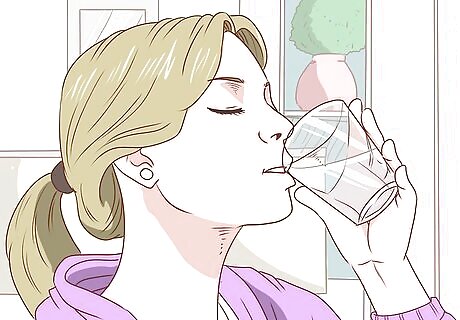
Drink small amounts of cool water frequently. Drinking water helps reduce high body temperature and replaces the liquid you lose by sweating. Drinking about 6 to 8 fluid ounces (180 to 240 mL) of water every 15 minutes is more effective than drinking a large amount in one sitting. Drink cool water instead of very cold water. If it’s too cold, it can cause stomach cramps or headaches.

Sip an electrolyte replacement drink to replace lost minerals. If you’re working or exercising in hot weather, grab an electrolyte replacement drink to replenish your body. Not only will it hydrate you, but it can also replace the salt and essential minerals lost in sweat. Just be sure to choose one with low sugar content! Staying hydrated is essential, so avoid soda and other sugary drinks, alcohol, and caffeine. Consuming these can increase your body temperature and dehydrate you. Avoid high-sugar sports or energy drinks, which can contain caffeine. A sports drink that is also an energy drink can increase heat production in your body.
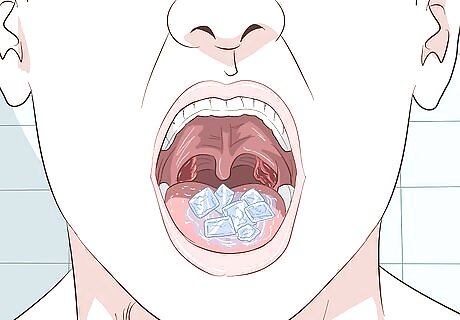
Chew on ice chips to keep your body temperature low. In addition to giving you a refreshing, cooling sensation, chewing ice can reduce your body temperature. Because of this, it can also help prevent heat exhaustion and heat stroke. Keep in mind you still need to stay hydrated. Chewing a small amount of ice won’t hydrate you as much as a full glass of water.
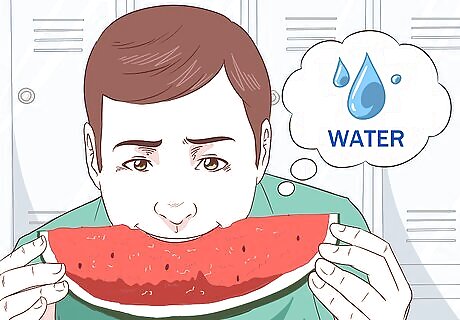
Eat foods that contain lots of water. In general, the more water a food contains, the more likely it will be to reduce your temperature. Watermelon, cucumber, and leafy greens are all great choices. Foods that contain lots of water are easier to digest. Easy digestion burns less energy and produces less heat.
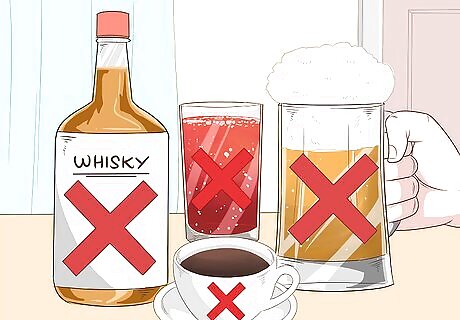
Avoid alcohol, caffeine, and sugar because they’re dehydrating. When you need to cool off, it’s tempting to reach for a cold beer, iced coffee, or sweet tea. However, consuming these ingredients will cause dehydration, heat your skin, and interfere with your body’s ability to control your temperature.
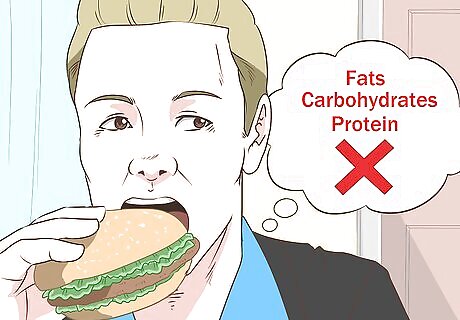
Avoid foods that contain high levels of fat, protein, and carbs. It might seem counterintuitive, but ice cream will end up warming you, even if it cools you down in the short term. Fat, protein, and carbohydrates all take more energy to digest. More energy means more heat. Other foods to avoid when you’re hot include red meat, nuts, and brown rice.
Dealing with Heat Exhaustion
Stop being active and rest. As soon as you start feeling overheated, stop what you’re doing and sit or lie down. Be as still as possible so that your body temperature will start to go down. If you feel dizzy or confused, ask someone to call for help while you rest. If someone else is feeling overheated, walk them over to a place where they can relax.
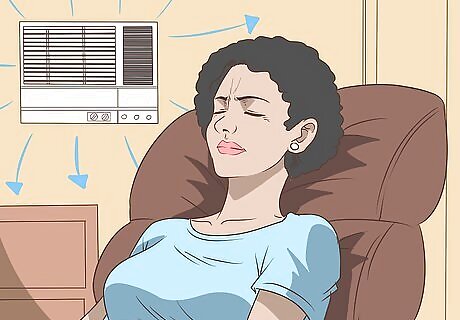
Move to a shaded, cooler location. If you’re experiencing heat exhaustion, you need to cool down quickly. If possible, go indoors to an air conditioned spot or sit in front of a fan. If you’re helping someone who’s experiencing heat exhaustion or a possible heat stroke, help them move to a cool location. They may be disoriented.
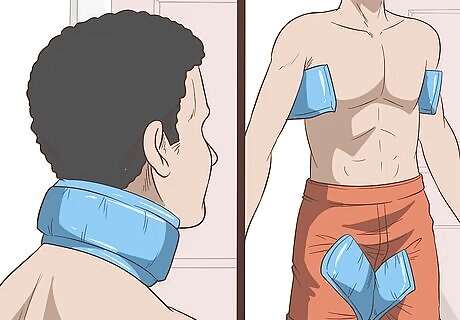
Apply ice packs to your neck, groin, and underarms. Applying ice packs or cold towels will help you cool down fast. Alternatively, a cool bath can also quickly reduce body temperature, but make sure you don’t start shivering. If you’re outdoors, a hose or body of water might be your best option.
Sip on cool water or an electrolyte replacement drink to cool you down. While you rest, take small sips of a cool beverage to help you cool down faster. If you have an electrolyte replacement drink, it’s your best option for feeling better fast. However, you can also drink water.
When to Seek Medical Care
Call your doctor if you don’t feel better after 1 hour. If you’ve gotten overheated or developed a fever, you should start to feel better and cool down after an hour of self care. However, your symptoms may persist, which might require medical treatment. Talk to your doctor to find out if they recommend additional treatment. As an alternative, visit an urgent care center to get checked. You’re probably going to be okay, but it’s best to be safe.

Visit your doctor if you have a high fever or serious symptoms. Try not to worry because you can get treatment, but a fever over 104 °F (40 °C) in adults and children or 100.4 °F (38.0 °C) in infants younger than 3 months is a cause for concern. Similarly, serious symptoms may require additional treatment. See your doctor immediately if you notice a fever or any of the following serious symptoms: Seizures Loss of consciousness Confusion Stiff neck Trouble breathing Severe pain
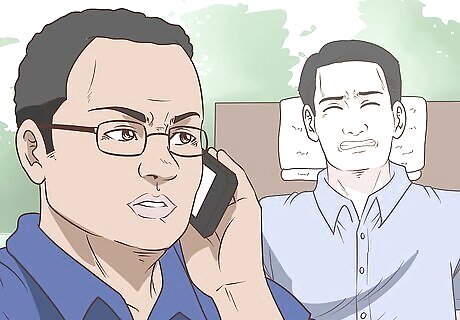
Call emergency services if someone shows signs of heat stroke. Heat stroke is more serious than just feeling hot or having heat strain and requires prompt medical attention. Try not to worry, but you do need immediate medical care. Call for help or go to an emergency room to get treatment if you have the following symptoms: Confusion or agitation Nausea and vomiting Rapid breathing Racing heart rate Changes in sweating Faintness Muscle cramps Being unable to drink Fever above 104 °F (40 °C)













Comments
0 comment